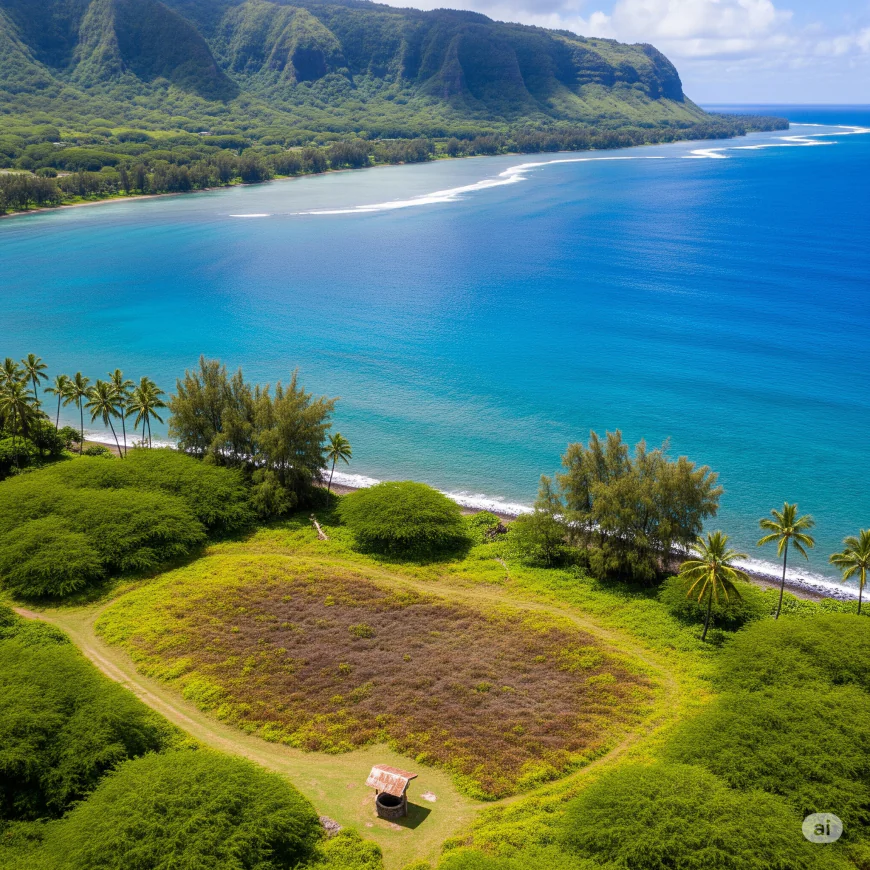The Looming Threat of Sea Level Rise to Hawaii's Freshwater Resources
Investigate how sea level rise and human activity threaten Hawaii's vital freshwater aquifers, detailing impacts on public health, agriculture, economy, and culture, and advocating for integrated, proactive solutions for a water-secure future.
Hawaii's Freshwater Crisis: When The Ocean Creeps In
Hawaii's in trouble, and it's not just about rising seas - it's about what's happening underground. This island paradise depends on freshwater for everything: drinking water, farming, and keeping tourists happy. But here's the scary part: salt water is slowly creeping into the islands' precious freshwater supplies, and it's happening faster than you might think.
This isn't just another environmental story. We're talking about real impacts on people's health, local farms going under, the economy taking a hit, and some communities getting hurt way more than others. So let's dig into what's going on here. We'll break down how saltwater sneaks into freshwater supplies, show you what's happening right now and what scientists expect next, and pinpoint which areas and neighborhoods are most at risk. You'll see how this affects everything from your tap water to the food on your plate.
We'll also talk money - because fixing this won't be cheap. But there's hope, too. We'll explore smart solutions people are working on, examine why current policies aren't working, and, most importantly, hear from the individuals who are living with this crisis every day. This is the full story of Hawaii's freshwater emergency - and why it matters to all of us.
The Science of Saltwater Intrusion in Island Aquifers
Here's something fascinating about Hawaii's drinking water: it's all sitting on top of the ocean. Seriously! The islands' freshwater supply depends on what scientists call a "freshwater lens," and it works exactly like it sounds. Since freshwater is lighter than saltwater, it floats on top of the denser ocean water that's soaked into the rocks below. When rain falls and seeps through the ground, it keeps the underground reservoir topped off.
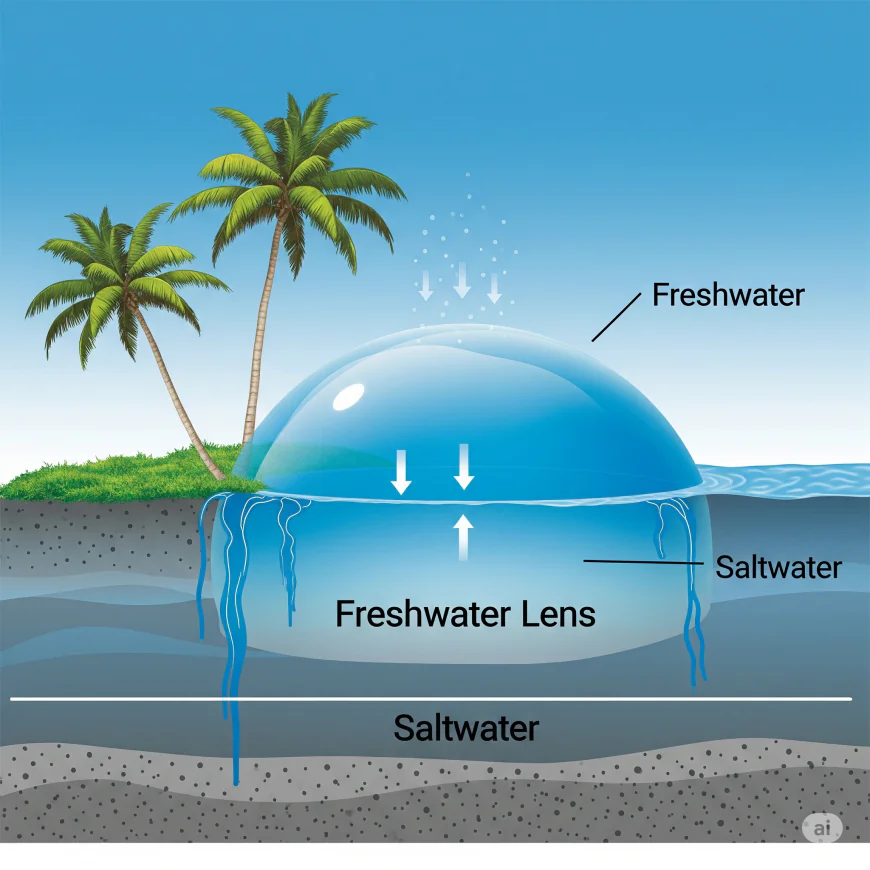
But here's where things get tricky. Rising sea levels are throwing this delicate balance completely out of whack. As the ocean climbs higher, it pushes harder against that freshwater lens, forcing the heavier saltwater up and inland into our drinking water supplies. This saltwater intrusion is contaminating freshwater in several ways. In low-lying coastal spots, the ocean can flood wells directly or seep into shallow water sources. Even without flooding, the extra pressure from rising seas pushes saltwater deeper into the porous rocks holding our freshwater. And when we pump too much water from wells - especially during droughts or when demand spikes - we're making things worse. We're shrinking the freshwater lens and inviting saltwater to rush in and take its place.
What makes Hawaii extra vulnerable? The islands are giant volcanic sponges. They're made of porous rock that lets both fresh and saltwater flow through pretty easily. Sure, this spongy quality helps create those big freshwater lenses we rely on, but it also means saltwater can intrude much more easily. Different parts of the islands face different levels of risk, too. The age of the volcanic rock, natural barriers like dikes, and the shape of each coastline all play a role. Some areas are naturally sitting ducks for contamination, while others have a bit more protection built in.
Current Impacts and Future Projections
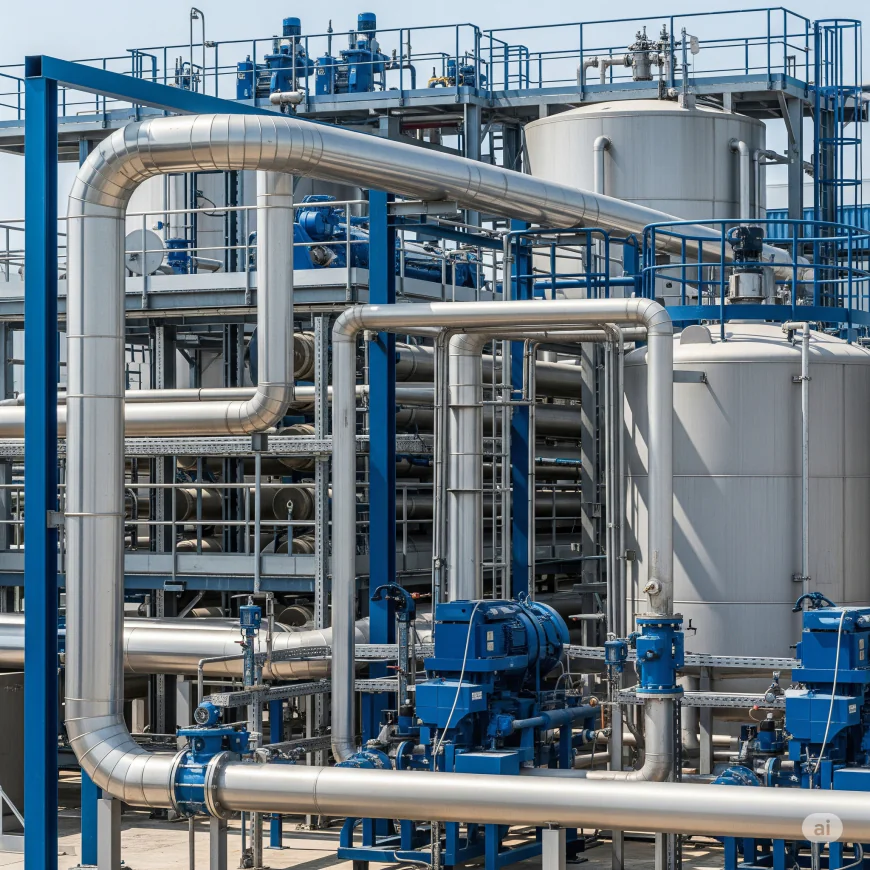
Saltwater intrusion isn't just some far-off threat for Hawaii - it's happening right now. We've got the data to prove it, and it's pretty eye-opening. Studies show that salt levels are creeping up in wells and coastal areas across our islands. Take Oahu, for example: the Board of Water Supply and geological surveys have tracked the freshwater-saltwater boundary moving westward in some aquifers. That means pumping stations have had to change how they operate to avoid pulling up salty water.
And it's not just the scientists noticing this. Local farmers and folks living near the coast are seeing it too. Some have mentioned their well water tastes different from how it used to - saltier. That's a real-world sign that things are changing.
So what's coming down the pipeline? Scientists have run the numbers, and honestly, it's concerning. Using data from IPCC reports and Hawaii's Climate Change Mitigation and Adaptation Commission, they've mapped out what rising sea levels mean for our water supply:
- In 20 years: We're looking at modest sea level rise, but it'll still make things worse for coastal wells that are already struggling. Some shallow agricultural wells might start feeling the pinch, too.
- In 50 years: By mid-century, we'll see more widespread problems with our freshwater lenses. More public and private wells will be affected, which means we'll need to rely on pricey water treatment systems to keep things drinkable.
- In 100 years: The long-term outlook shows major changes to Hawaii's freshwater situation. Large chunks of what's currently fresh water could become too salty to use without serious (and expensive) intervention.
Threats to Specific Aquifers, Communities, and Industries
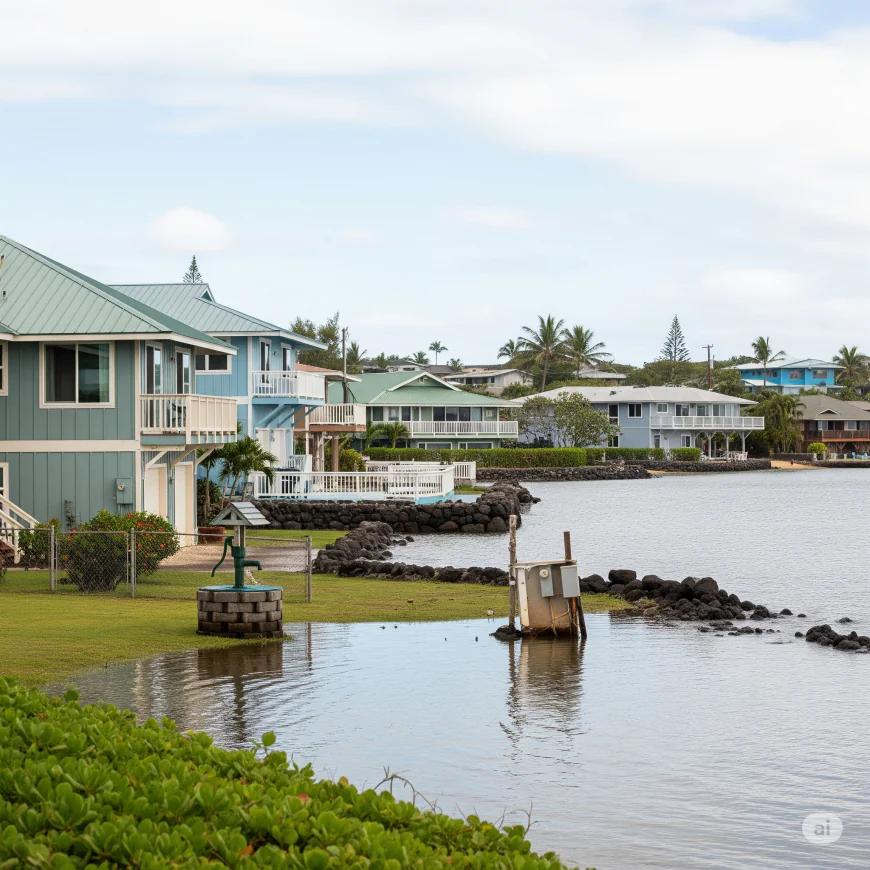
Here's the thing - saltwater intrusion isn't hitting all Hawaiian Islands equally. Some of our major freshwater sources, the communities that depend on them, and key industries are facing bigger risks than others.
Which Major Freshwater Sources Are in Trouble?
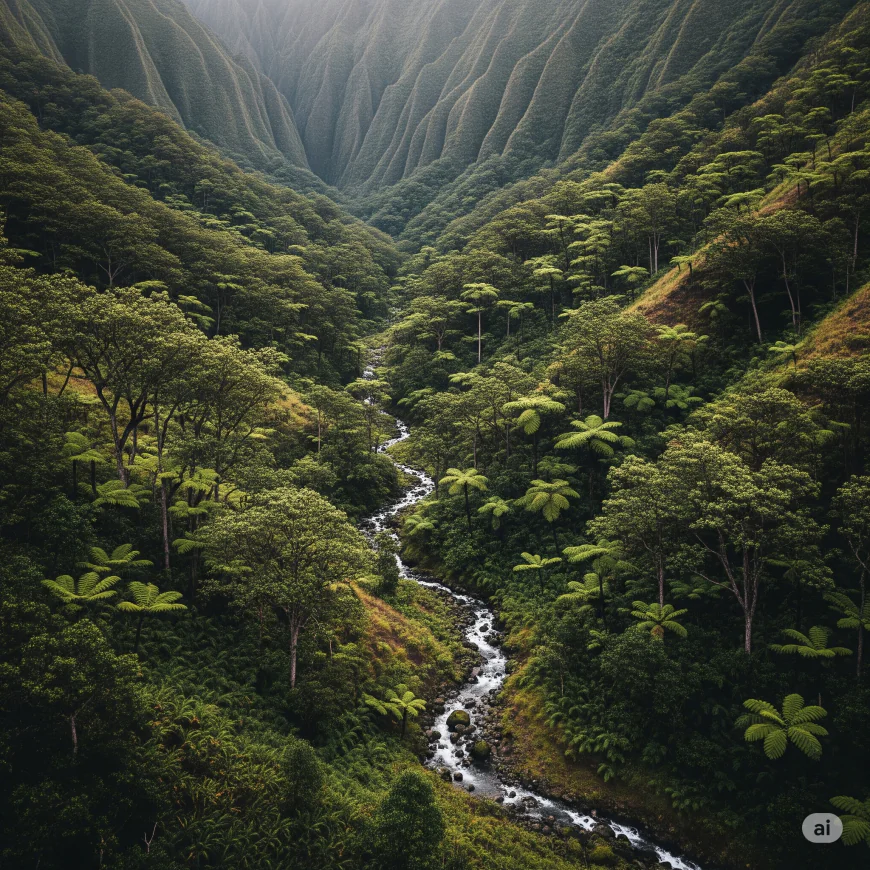
Let's start with Oahu. The Southern Oahu Basal Aquifer is in serious trouble, and that's a big deal since it's where Honolulu gets its drinking water. Because it sits so close to the coast at low elevation, the rising freshwater-saltwater boundary is creeping in fast. Over on Maui, coastal aquifers are crucial too - especially the ones feeding agricultural areas in West and Central Maui, where farmers rely on groundwater for irrigation. Each island has its challenges. Kauai's got ancient geology and unique coastal formations to deal with, while Hawaii Island's young, super-permeable lava flows create a whole different set of problems for protecting freshwater.
What This Means for Our Farms
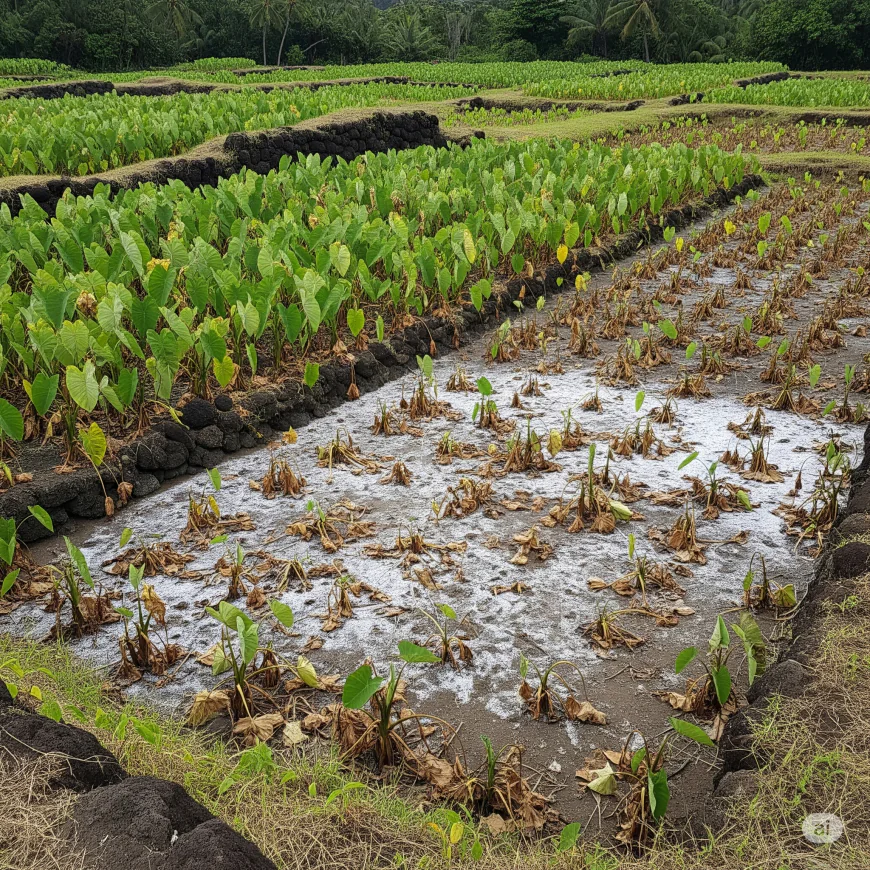
Agriculture - the backbone of local food production and our cultural heritage - is taking a direct hit. When salt water gets into irrigation systems, it becomes useless for most crops. Farmers are seeing their yields drop, and some are being forced to switch to salt-tolerant crops. Can you imagine how this could change Hawaii's agricultural landscape? We're talking less about food diversity and the serious financial strain on farmers. This doesn't just hurt individual farms - it threatens our entire local food system and pushes us to rely even more on imported produce.
Coastal Communities on the Front Lines
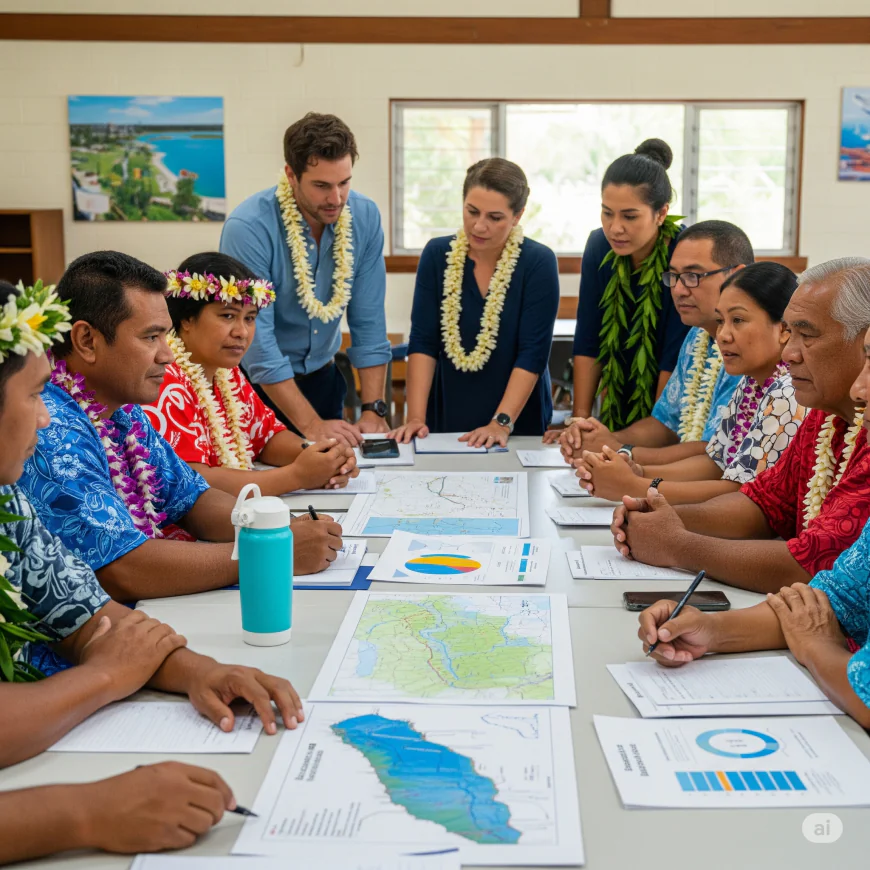
Low-lying coastal communities are bearing the brunt of this crisis. Their drinking water wells are at immediate risk - once saltwater gets in, these local sources become unusable unless communities can afford expensive treatment systems. But it's not just about water quality. Rising sea levels, made worse by saltwater intrusion, could force entire communities to relocate. We're talking about people losing their homes, sacred cultural sites disappearing, and tight-knit communities being torn apart. These aren't just environmental issues - they're questions of fairness and how we help our most vulnerable neighbors survive and thrive.
How Rising Seas Threaten Hawaii's Health, Farms, and Wildlife
When saltwater creeps into Hawaii's freshwater supplies, it doesn't just affect one thing - it creates a domino effect that touches everything from what we drink to what grows in our fields.
What This Means for Our Health
Let's start with the obvious: nobody wants salty tap water. When ocean water seeps into our drinking supplies, it's not just unpleasant - it can harm people, especially kids and the elderly. So what are our options? Well, we're looking at installing expensive reverse osmosis systems that'll cost a fortune in both money and energy. Or we'll end up buying bottled water by the case, which isn't exactly budget-friendly and creates mountains of plastic waste.
Here's another problem you might not have thought about: in coastal areas where water tables are rising, septic systems can fail. That's a recipe for serious health hazards and environmental damage right in our backyards.
Our Farms Are in Trouble
Hawaii's farmers are facing a harsh reality. Most crops simply can't handle salty soil - they wither and die. This means we'll grow less food locally and depend even more on ships bringing produce from the mainland. Remember when COVID disrupted shipping? Now imagine that vulnerability becoming permanent.
It's not just about economics either. When family farms shut down, we lose more than jobs. We lose traditions, cultural practices, and a way of life that's been passed down for generations. That's something you can't put a price tag on.
Nature Takes a Hit Too
Our wetlands are like nature's kidneys - they filter water and provide homes for native birds and plants. But when saltwater invades these freshwater havens, the whole system breaks down. Native species that have lived here for thousands of years suddenly have nowhere to go. Some might disappear forever.
The ripple effects spread to our coasts, too. Those delicate areas where rivers meet the ocean? They're changing fast, and every shift affects the web of life that depends on them.
Economic Costs and Adaptation Strategies
Hawaii's facing a serious saltwater problem, and here's the thing - doing nothing will cost us way more than taking action now.
Financial Burden of Inaction vs. Investment
If we don't tackle saltwater intrusion head-on, we're looking at costs that'll keep climbing. Think about it: we'll be scrambling to pay for emergency water supplies when contamination hits or shortages strike. But that's just the beginning. Our farms will struggle as freshwater gets saltier or harder to find, which means less local food and fewer agricultural jobs. And here's what worries me - if water problems become obvious to visitors, our tourism industry could take a massive hit. That's the backbone of Hawaii's economy we're talking about. Bottom line? We need to protect our freshwater if we want to keep our economy healthy.
Developing New Freshwater Sources
To boost our shrinking freshwater supplies, Hawaii's going to need some creative (and yes, pricey) solutions:
Desalination Plants: Sure, these can turn ocean water into drinking water, but wow, do they guzzle energy. The operating costs are huge, and there's the sticky issue of what to do with all that leftover salt brine.
Advanced Wastewater Recycling (Potable Reuse): This means treating wastewater until it's safe to drink again. It's got real potential as a sustainable option, but let's be honest - getting people comfortable with the idea will take some serious community education.
Infrastructure Relocation and Hardening
Much of our water infrastructure sits right in harm's way along the coast, and fixing that won't be cheap:
Moving Wells, Pumping Stations, and Treatment Plants: The smart move? Relocate our critical water facilities inland, away from advancing saltwater. It'll cost us now, but it secures our freshwater for the long haul.
Costs of Retrofitting Existing Infrastructure: For the stuff we can't move, we're looking at expensive upgrades - think protective barriers and high-tech filtration systems to keep the salt out and our water clean.
Water Conservation Measures
Here's where we can make a real difference without breaking the bank:
Public Awareness Campaigns and Incentive Programs: We need to help residents and businesses understand why saving water matters right now. Offering rewards for smart practices like rainwater collection and greywater recycling can really cut down on demand.
Stricter Regulations on Water Usage: Like it or not, we'll need tougher rules for how homes, farms, and businesses use water. It's the only way to stretch our limited supplies.
Investing in Natural Infrastructure Solutions
Beyond all the high-tech fixes, Hawaii's natural environment offers some of our best defenses:
Preserving and Restoring Wetlands, Forests, and Other Natural Systems: Here's what's cool - healthy wetlands naturally filter water and help refill our aquifers. Our forests do amazing work too, soaking up rainfall and preventing erosion that dirties our water. By protecting and bringing back these natural areas, we're getting free ecosystem services that keep our water clean and plentiful. It's a smart, sustainable piece of Hawaii's water security puzzle that saves money in the long run.
Policy and Governance Challenges
When it comes to protecting Hawaii's precious freshwater from saltwater intrusion, we're facing some serious hurdles. The biggest challenge? Making sure our current water management policies actually work - and fixing the gaps where they don't.
Current Water Management Policies in Hawaii
Hawaii's got a mix of state and county water plans on the books. These plans try to keep our freshwater resources in check by regulating water use, keeping tabs on aquifer levels, and planning for what's coming down the road. The state's also put together climate adaptation plans that recognize how climate change - including rising sea levels - affects everything. But here's the thing: while these plans mention saltwater intrusion, they don't always tackle it head-on with solid protection strategies. We know there's a problem, but the follow-through? That's where things get shaky.
Identified Policy Gaps and Shortcomings
Even with these frameworks in place, we're still missing the mark in several key areas:
Lack of Proactive Land Use Planning in Vulnerable Coastal Zones: Right now, we're not doing enough to limit development in areas where saltwater intrusion is most likely to hit. Instead of getting ahead of the problem, we're playing catch-up - and that's putting communities and infrastructure in harm's way.
Inadequate Funding for Long-Term Water Infrastructure Resilience: We're chronically underfunding the long-term protection of our water systems. Sure, we'll throw money at immediate problems, but investing in future-proofing our infrastructure? That's been on the back burner for too long.
Challenges in Inter-Agency Coordination: Managing water resources and adapting to climate change requires everyone to work together - state agencies, county departments, and federal partners. But when responsibilities are scattered and nobody's talking to each other, we miss chances to create real solutions.
Proposed Policy Changes and Advocacy Points
So what do we need to do to protect Hawaii's freshwater future? Here are the big moves we should make:
Stronger Regulations on Coastal Development: We need tougher rules for building in vulnerable coastal areas. Think mandatory setbacks, elevation requirements, and limits on concrete and asphalt that prevent water from soaking into the ground. These measures can protect our aquifers from both flooding and excessive pumping.
Dedicated Funding Mechanisms for Climate Adaptation and Water Infrastructure: It's time to put our money where our mouth is. We need reliable, substantial funding specifically earmarked for climate adaptation and water infrastructure upgrades. This might mean finding new revenue sources, tapping into federal grants, or creating partnerships between public and private sectors.
Integration of Climate Change Projections into All Levels of Planning and Permitting: Every land use plan, building code, and permit process - whether state or county - needs to factor in climate change projections, especially sea level rise and its impact on freshwater. If we're building for the future, we need to design with resilience in mind.
Promoting Traditional Hawaiian Land Management Practices (Ahupua'a Concept) as a Model for Sustainable Water Resource Management: The ancient Hawaiian ahupua'a system managed resources from mountain to sea as one connected unit. This traditional approach - with its emphasis on stewardship, interconnectedness, and thinking long-term - could teach us a lot about managing water sustainably today. That includes protecting our mauka (mountain) watersheds, which are crucial for refilling our groundwater supplies.
Case Studies and Community Voices
To understand how saltwater intrusion affects people's lives, we need to step away from the scientific models and policy papers. Let's hear directly from the folks dealing with this every day: residents, farmers, small business owners, and the experts working hard to tackle this threat.
Interviews with Local Residents
For people living in Hawaii's coastal communities, changes in water quality aren't just abstract concepts - they're real problems affecting daily life. By listening to residents in areas where saltwater intrusion is already happening, their stories hit home. Some noticed their well water just doesn't taste right anymore. "It tastes a bit off sometimes, especially during dry spells," one resident said.
People are worried about what's coming next. Will this affect their health? Will they have to start buying all their drinking water? The thought of losing their freshwater supply – or worse, having to leave homes their families have lived in for generations – is heartbreaking. You can feel the personal and emotional weight of this environmental crisis in every conversation.
Perspectives from Farmers and Small Business Owners
Small farms are taking a huge hit. Farmers on Oahu have watched their water tables drop while seawater creeps in, leaving them with way less freshwater for irrigation. Here's just one example: a taro farm that needs about 250,000 gallons of water per day per acre was getting only 35,000 to 45,000 gallons for three whole acres during critical times. That's barely a fraction of what they need.
When saltwater gets into agricultural soil, it makes everything saltier and less fertile. Plants can't take up water properly, crops don't grow well, and yields drop for staples like soybeans, corn, and wheat. After saltwater floods farmland, it takes up to two years to flush out enough salt before farmers can plant again. These stories show just how much economic pressure farmers face and why we need solutions now.
Insights from Hydrologists, Climate Scientists, and Urban Planners
Experts paint a clear picture of how urgent this threat is. Hydrologists explain that Hawaii's aquifers are "surrounded by seawater, and salt water underlies much of the fresh groundwater." When we pump groundwater, we're making things worse – we're pulling saltwater into our freshwater supplies. As one expert put it, we've got a "double problem in that we have sea level rise naturally by gravity causing more seawater intrusion, and of humans pumping freshwaters from the aquifers — drawing in even more."
Climate scientists confirm what we're all seeing: sea levels are rising faster, and Hawaii will see significant changes in the coming decades. Urban planners are pushing for what they call an "integrated water resource management (IWRM) framework, often referred to as a 'One Water approach.'" Basically, they're saying we need to manage all parts of the water cycle together, with different agencies and sectors working as a team.
The message from all these experts? We need to act now and plan smart for a future where water security is guaranteed.
It's Time to Act for Hawaii's Freshwater Future
Hawaii's freshwater is in serious trouble, and we need to talk about it. Rising sea levels are pushing saltwater into our precious underground water supplies, and the islands' unique volcanic geology makes this problem even worse. Add in our ongoing challenges—like pumping too much water and poor wastewater management—and you've got saltwater creeping deeper into aquifers we desperately need.
This isn't just about water. It's affecting everything.
Think about it: contaminated drinking water puts people's health at risk. Farmers can't grow crops properly, which threatens our food supply. Infrastructure repairs are costing us millions. And Native Hawaiian communities? They're facing deep cultural and social disruption as their traditional water sources disappear.
Sure, we've made some progress. Water conservation programs are helping. We're exploring options like desalination and recycling wastewater. Natural infrastructure solutions show promise, too. But let's be honest—we're not moving fast enough. Political gridlock, especially around housing issues, isn't helping. Neither is our underfunded mental health system, which leaves vulnerable populations—especially young people—without support. And when you're depending on federal funding that could dry up? That's another worry entirely.
So what do we do? Hawaii needs a complete shift in how we handle this crisis. We need policies that actually protect freshwater and manage our water resources as one connected system. We can't keep patching problems after they happen—we need to invest in infrastructure that's built for tomorrow's challenges, not yesterday's. More research and better monitoring systems will give us the data to make smart decisions. Most importantly, solutions need to come from the communities themselves, respecting cultural knowledge and empowering local voices. When we combine smart engineering with social and cultural resilience, that's when real change happens. Hawaii can protect its water, support its people, and build a future that works for everyone.



